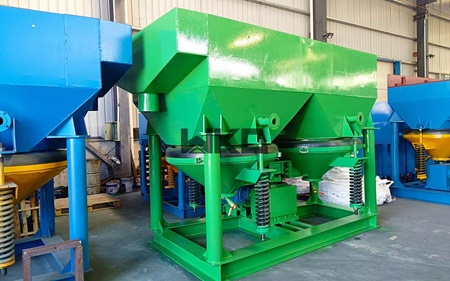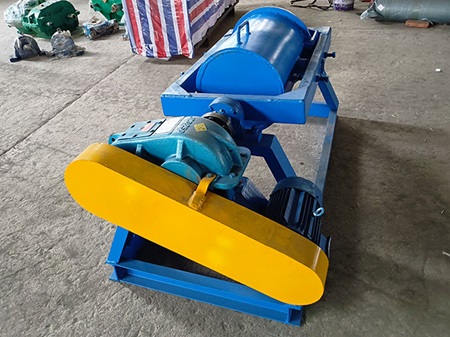

The mined raw ore is first fed into a jaw crusher for coarse crushing. The jaw crusher uses the squeezing motion of two jaw plates to break the gold-bearing rock into particles smaller than 100mm.
After coarse crushing, the ore is sent to a cone crusher for fine crushing, typically reducing it to below 20mm to facilitate subsequent grinding.
The jig machine separates gold from gangue based on differences in density, primarily recovering partially liberated coarse gold particles. Under the pulsating water flow generated by the jig, dense gold particles settle at the bottom of the screen plate to form concentrate, while lighter waste rock is carried away by the water flow. This step allows for the early recovery of coarse gold, reducing the volume of material for subsequent processing.

The crushed ore enters a ball mill for fine grinding. The ball mill is filled with steel balls that impact and grind the ore into slurry (typically with a fineness of -200 mesh). This process aims to fully "liberate" the gold-bearing mineral particles, exposing the gold particles and creating the necessary conditions for subsequent extraction.
Since gold readily reacts chemically with mercury, fine gold particles combine with mercury to form gold amalgam, separating them from other minerals. This is achieved through prolonged rolling and stirring in a cylindrical ball mill. After washing and squeezing, solid gold amalgam is obtained. This is a traditional and effective method for recovering fine liberated gold.

The collected gold amalgam is first distilled to recover the mercury for reuse. The gold-containing material is then mixed with flux and placed in a gold smelting furnace, where it is melted at high temperatures (approximately 1300°C). The flux reacts with impurities to form slag, which is removed. Finally, the molten gold, due to its high density, settles at the bottom. It is poured into molds to cool, resulting in high-purity gold ingots.